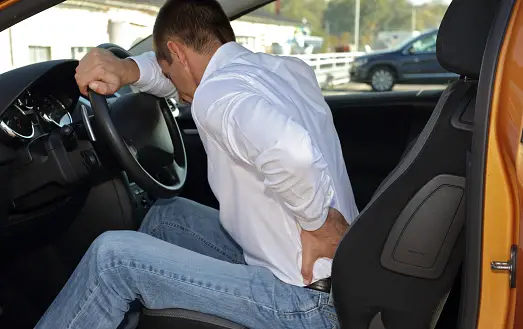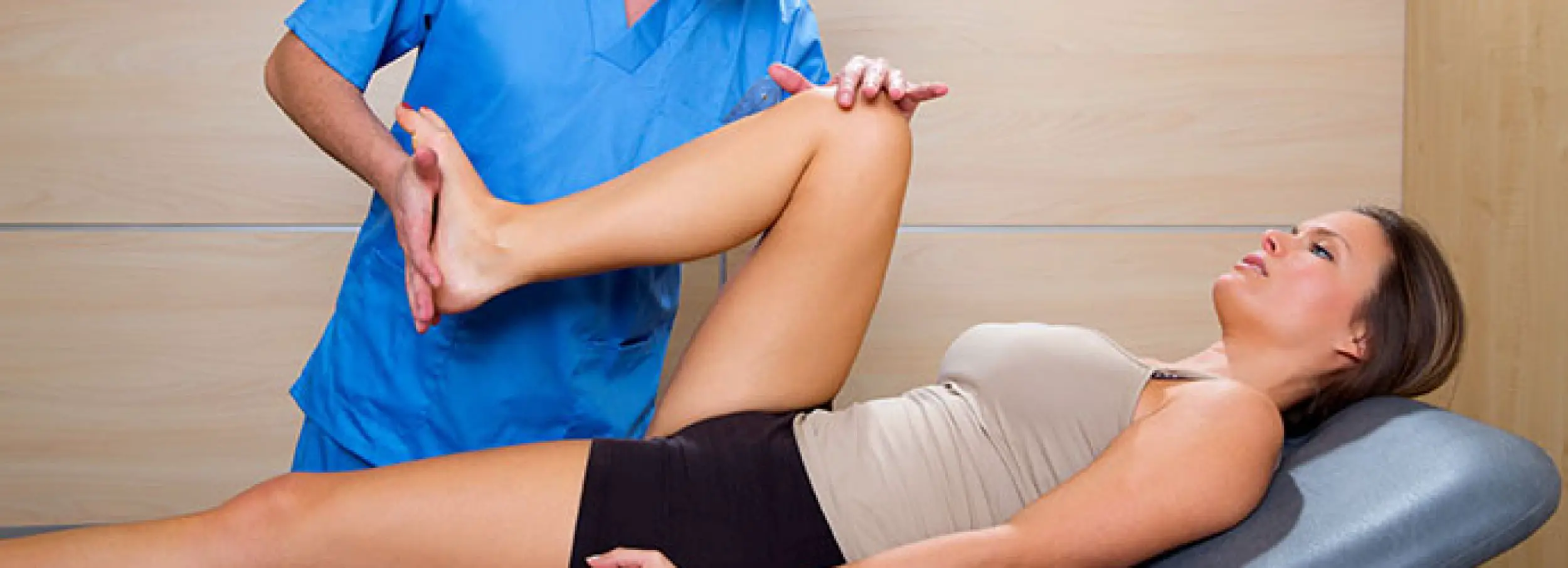Back ache is a very common problem experienced by almost 70 to 80% of the world population at some point in their lifetime. It is one most common reasons to be absent from work.

According to the duration of pain, it can be divided into acute and chronic back pain, where acute pain appears for less than 3 months and chronic back pain can be maintained for a longer time. It can also be divided into cervical, thoracic, lumbar and sacrococcygeal, according to the localization of the pain.
The causes of back pain can be divided into mechanical, destructive, inflammatory, or others, which include Paget’s disease and spinal stenosis. However, the most common cause is mechanical, and can arise due to a traumatic event such as road traffic accidents. You would understand the reasons of back pain after a car accident. But what if you had an accident some time ago and still have lingering pain? Is that normal?
Causes of prolonged back pain following a car accident
Road traffic accidents are major causes of traumatic/mechanical back pain. Pain can occur acutely due to fractures, soft tissue bruises, vascular damage, and spinal cord injury. Prolonged/chronic pain after a car accident can be due to the following causes:
Fracture pain
In a car accident, if the individual was wearing a seat belt while driving, this protection device can literally save the person’s life. However, in some cases this individual can get a chance fracture. Chance fractures are due to the excessive flexion of the vertebral column when the car suddenly stops.
Normally, the fractured bones take almost one to two years or even more to heal completely. During the healing time, the patient might feel back ache at regular intervals, it may also be due to complications of the fracture itself, such as malunion, nonunion, and delayed union.
Nervous tissue problems
Violent trauma is one of the red flag signs of spinal injury. Common injuries in these cases include spinal cord compression and/or nerve root compression. This can be due to a primary fracture in which a dislocated or misplaced bone compresses or harms the nervous tissue.
Moreover, this can also happen as a complication of fractures, such as bleeding, hematoma formation, vertebral disc slip, and others. Other complications of fracture that can lead to spinal problems and prolonged back include healing problems, and the abnormal growth of bone leading to stiffness and compression of the surrounding tissue (heterotrophic ossificans).
Post traumatic arthralgia and stiffness
Post-traumatic arthralgia of the joints in the vertebral column results from a chronic inflammatory reaction that stays for a long time after trauma. This reaction occurs in response to the damage to the joints during the car accident. It leads to decreased joint space, which results in stiffness of the joints that affected by the accident, and results in pain upon movement.
Failed back surgery syndrome (FBSS)
FBSS is characterized by persistent back pain after surgical treatment to alleviate back pain or leg pain (leg pain due to vertebral problems) after trauma. After surgery, leg pain is usually relieved, but back pain is not cured in a significant number of patients. FBSS is not due to inadequate or incorrect surgery but because the injury is very severe, and a complete cure was not possible.
Postoperative infection
Infection is another less likely factor leading to prolonged back pain. If infection occurs, it either causes acute pain or less chance of infection. The risk of having a postoperative infection has decreased because of improved antiseptic measures and the use of broad-spectrum antibiotics. So, infection is a rare cause of prolonged back pain nowadays.
Dislocated facet joints or prolapsed intervertebral discs
Facet joints are present between the successive vertebrae. These articulations can get displaced because of severe accidents and lead to chronic back pain. This misplacement is usually associated with an injury to the nervous tissue, as noted above.
Intervertebral discs (IVD) are soft tissue cushions present between the vertebrae. Herniation of IVDs is an important ailment causing chronic back pain. Some patients may even develop this problem without having a major trauma. Since the herniation of the vertebral discs is associated with spinal nerve compression, it also leads to sensory and motor deficits. It causes pain at the level of vertebral column where the prolapse has occurred.
Sprain/strain
Sprain is the damage or tear in a ligament while strain is damage or tear in a tendon or muscle tissue. Tendons and ligaments take longer to heal. A car accident causing sprain or strain can cause sustained back pain for a longer period of time.
It is the most common cause of chronicity of back pain. It is a diagnosis of exclusion, meaning there’s no other cause, or the other causes has been ruled out. Only in that circumstance is psychosocial pain diagnosed. It is quite common to have this type of pain after a car accident, especially if the event was emotionally traumatic and if the patient is continuously thinking and worrying about health issues and newly arising symptoms.
with thanks www.ncbi.nlm.nih.gov
Back muscles exercises to avoid back pain
To alleviate back pain due to minor ailments and prolonged back pain after a car crash, it is necessary to make sure you have a correct body posture. Exercise helps strengthening the muscles of the back so there is less stress on the spinal bones.
Strong muscles can carry body weight and reduce the stress of upper body by balancing and sharing the weight in several pressure points instead of only one. It also helps to drain excretory products through the sweat and increases the blood flow.
Another benefit of exercise is that it decreases the time of healing by increasing blood supply to different parts of the body, especially to the injured part. Recommended exercises include full stretch body exercises, back extension, thoracic extension, pelvic tilt, single/double knee to chest stretch, and quadruped arm/leg raises.
References:
Duckworth, M. P., & Iezzi, T. (2005). Chronic pain and posttraumatic stress symptoms in litigating motor vehicle accident victims. The Clinical journal of pain, 21(3), 251-261.
Gasquoine, P. G. (2000). Postconcussional symptoms in chronic back pain. Applied Neuropsychology, 7(2), 83-89.
Ruiz-Párraga, G. T., & López-Martínez, A. E. (2015). The role of experiential avoidance, resilience and pain acceptance in the adjustment of chronic back pain patients who have experienced a traumatic event: a path analysis. Annals of Behavioral Medicine, 49(2), 247-257.
Jayson, M. I. (1992). Trauma, back pain, malingering, and compensation. BMJ: British Medical Journal, 305(6844), 7.
